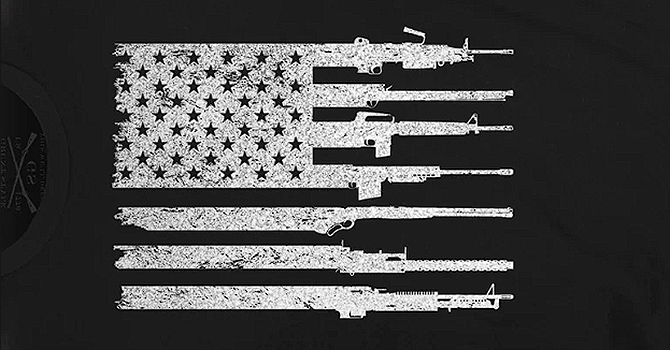When the Romans arrived in what is now Bath, England, around 50 C.E., they found a cultic site dedicated to Sulis, the goddess the Britons believed inhabited the hot springs that bubbled up from the earth. Loving the warm baths and hoping to encourage the Britons to become loyal subjects of their empire, the Romans deployed diplomacy.
They built a new temple complex honoring Sulis, the goddess of the Britons, but with the Roman surname Minerva added. Apparently, everyone was happy, since the temple of Sulis Minerva and her baths remained in use until the Romans departed in the fifth century.
In honoring Sulis while putting their imperial stamp upon the new temple, the Romans had employed syncretism, the melding of two or more religious traditions so that a composite is created, a process common among many cultures across millennia. In the history of imperial conquest, syncretism ranks as one of the more beneficent ways of appropriating an indigenous people’s traditions in the service of an empire’s ends.
If we imagine syncretism at one end of a spectrum of options open to conquerors, the opposite extreme may be co-optation, the cynical absorption of a people’s sacred narratives and symbols with the attendant revisionism needed to serve the regime’s ends.
Historian Claudia Koonz suggests that Leni Riefenstahl, the Third Reich’s brilliant propagandist, consciously conscripted Germany’s long tradition of cathedral worship in her designs for the rallies that became a focal point for the Nazi cult.
In the Nuremberg Rally of 1934, Riefenstahl designed a procession in which Hitler, “like a priest, marched up the aisle” and in the next scene preached “from a pulpit on high, flanked by swastika flags against a cloudless sky,” Koonz writes in “Mothers in the Fatherland: Women, the Family and Nazi Politics.”
A liturgy familiar to generations of Germans had been co-opted, cherished hymnody supplanted by the martial paeans of the Reich and the gospel usurped by Hitler’s oratory. The historic architecture of worship remained but had been repurposed for the new regime.
This history is instructive in understanding what I would argue is a cult of the gun in America, with all the features of a new religion. This cult occupies a place somewhere along the continuum from syncretism to co-optation. It has a sacred text, the Second Amendment, and a priesthood, the National Rifle Association. The NRA alone enjoys the privilege of exegeting that text, abetted by its legions of ordinands. Dissenters from the exegesis are denounced as enemies of the rights conferred upon the faithful by the sacred text.
In the service of the cult, the murder of children in their classrooms has been construed as a regrettable inconvenience, necessary to guarantee the cult’s freedom of religion.
America has always provided fertile soil for new religions. In the 1630s, for example, Roger Williams simply moved to Rhode Island when he violated the perimeter fence of New England propriety. A dissenter could move a few miles away and establish a new colony with a fresh catechism, a privilege unimaginable in Europe.
When Jefferson, Madison and others wrote separation of church and state into the new U.S. Constitution, the opportunity for the proliferation of sects and denominations in America was assured.
Seen in this historical context, the emergence of novel religious perspectives is to be expected. Joseph Smith’s founding of the Latter-day Saints and that group’s eventual exodus to Utah stand as the template for American religious innovation.
But whence the cult of the gun? Against what constraining orthodoxy does it rebel? And what constitutes its promised land? Where is its Utah?
Kristin Kobes Du Mez, in her book “Jesus and John Wayne,” chronicles the rise of “Christian warrior masculinity,” which exhibits some aspects of a cult and resides comfortably within the larger enclave of American evangelicalism. Beginning in the 1990s with groups such as Promise Keepers and following the usual conservative blueprint for erecting an edifice against contemporary culture, Christian warrior masculinity sought to countervail forces that it perceived as distorting traditional Christianity.
These included feminism, the erosion of clearly defined roles for women and men in marriage, increasing rates of divorce, acceptance of same-sex relationships, and a liberal media’s perceived emasculation of Jesus.
Jesus, insisted the Christian warrior narrative, had been a “complete Hero” while in the flesh and would someday return “on a white war horse, in a blood-spattered robe, with a sword in His mouth and a rod of iron in His hand,” Kobes Du Mez writes, quoting evangelical Stu Weber’s bestseller “Tender Warrior.” No “gentle Jesus, meek and mild,” as the old hymn by Charles Wesley had declared.
Were the cult of the gun simply an outgrowth of the Christian masculinity movement, its indifference to the horrors of Sandy Hook and subsequent slaughters would be inexplicable. A concurrent trend, however, may have shorn this reclaimed masculinity of its ethical underpinnings.
Russell Moore, the editor-in-chief of Christianity Today, observed in a 2022 article that “lapsed and non-church-attending evangelicals are now … the largest religious body in the South” and that “unchurched evangelicals in the South not only keep their politics but also ratchet up to more extreme levels.”
Bereft of the behavioral guardrails a local congregation establishes for its members, these unmoored evangelicals often adopt what Moore calls a “blood-and-soil mentality” indifferent to traditional Christian eschatology. They don’t have a defined Utah.

At a 2018 National Rifle Association gathering, retired Major League Baseball player Adam LaRoche sported a shirt with the message “Jesus loves me and my guns.” The shirt was a vestment for an ordinand of the gun cult, heretical in the church, a badge of honor for its wearer. The shirt’s simple message may have represented the distillation of a frustrated masculinity, on the one hand, and ironically, a secularized evangelicalism, untethered from mercy, on the other.
Apocalyptic cults such as the Branch Davidians tend to devolve into tragedy, as the events at Waco in April 1993 bore witness. But these groups usually include few members and are understood by the larger culture to exist on the fringes of society.
What happens when large numbers of the formerly churched, “infected with a delta variant,” as Moore writes, “morph into something else”? Perhaps the cult of the gun is born.







